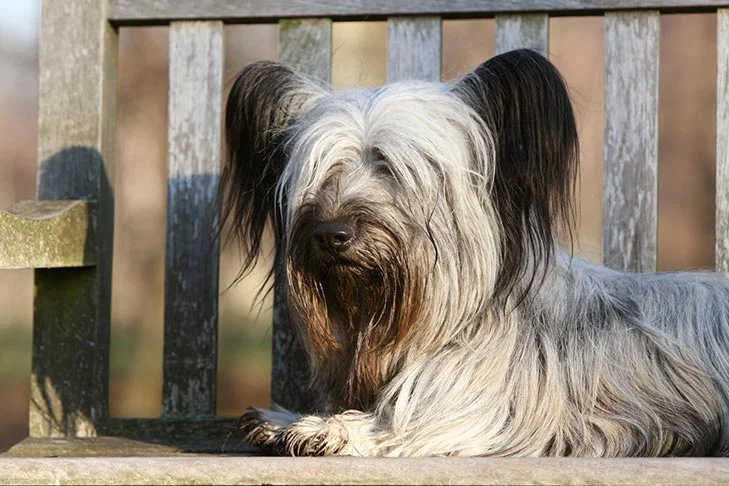On Scotland’s secluded Isle of Skye, this graceful but tough nobleman was bred as an exterminator. Long, low, and level, Skyes is 9 or 10 inches tall with a long, flat-lying coat and a peekaboo hairstyle. Skyes are famous for their huge, feathery ears that stick up like bat wings, but they can also have ‘drop ears,’ which lie flat on the large, long head. Short, powerful legs and a deep chest are hidden beneath the thick coat. These sleek but hefty terriers are twice as long as they are tall when viewed from the side.
Skye Terrier
Average sizes and life
expectancy of the breed.
Height
10 inches (male)
9.5 inches (female)
Weight
35-45 pounds (male)
slightly lighter (female)
Life Expectancy
12-14 years
Breed Traits & Characteristics
About the Breed

Owning a dog is not just a privilege; it’s a responsibility. They depend on us for, at minimum, food and shelter, and deserve much more. When you take a dog into your life, you need to understand the commitment that dog ownership entails.
 Health
Health
 Grooming
Grooming
 Exercise
Exercise
 Training
Training
 Nutrition
Nutrition
History
Skye is the largest and most northerly of the Inner Hebrides islands in Scotland. The rough, hard-coated terrier raised by the island’s farmers to manage the fox and badger population became a favorite of British aristocrats in the 1600s, which was an unusual development for a working farm dog. Skye popularity peaked in the late 1800s, when Queen Victoria championed the breed. A historian stated that “a duchess would almost be ashamed to be seen in the park unaccompanied by her long-coated Skye.”



